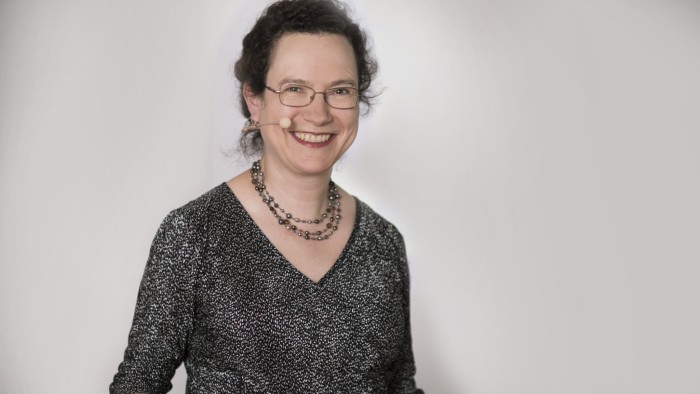“Banks just aren’t set up to understand small businesses”

Simply sign up to the Fintech myFT Digest -- delivered directly to your inbox.
If there were one overriding theme to pick out in the applications for this year’s Future of Fintech Awards, it was a focus on small business customers. The words “small businesses are poorly served by banks” kept cropping up on submissions. Fintech companies, it would seem, are lining up to fill this gap in the market by providing small companies with everything from lending, foreign exchange to advice.
For many founders the idea for their start-up had come from a bad personal experience with small business banking.
Jared Hecht, for example, stumbled on the idea for Fundera when he was helping his cousin raise money for a new restaurant. Two previous sushi restaurants were already open and thriving, but Mr Hecht’s cousin was struggling to raise the $300,000 he needed to open a third outlet. Three banks had turned him down.
Mr Hecht had previously built and sold, GroupMe, a consumer internet business, and was struck by the difference between getting funding for an internet venture and financial backing for a traditional small business. “Investors are willing to give internet companies money on the basis of a business plan. My cousin couldn’t get funding for a proven business model. It seemed preposterous,” he says. “It was a big red flag and an opportunity.”
Fundera set out to provide small business owners a one-stop shop to find information about available loans. It acts as a middleman between lenders and small and medium enterprises, qualifying both the lender and borrower to take some of the uncertainty out of the transaction.
SMEs are a potential enormous market. Small companies account for 90 per cent of the world’s businesses, according to the SME Finance Forum, a global small business association.
They are, indeed, poorly served by banks, says Matt Gamser, head of the forum. Banks tend to provide personalised services for a few high-value customers, or automate services for a mass consumer market. “SMEs don’t work well with either of those models,” he says. “Just because they are small doesn’t mean these businesses aren’t complicated and banks just aren’t set up to understand them.”
Mr Gamser estimates there is globally at least a $2tn gap between small businesses demand for financing and what financial institutions are willing to provide.
Sofie Blakstad, chief executive of Hiveonline, saw the problem first hand when she was working at a bank. “When I was at Citigroup we were making a 6 per cent return on retail banking, which is nothing. Customising anything is difficult when you are working on a core system that was built 40 years ago.”
Ms Blakstad wanted to build something uniquely tailored to very small businesses such as construction companies and caterers, who spend very little time sitting in an office. Hiveonline offers them a way to carry out administration tasks such as giving customers quotes or sending invoices, over their mobile phone.
In addition Hiveonline ended up helping these microbusinesses with another problem: trust
“I always ask people what their main problem is, is it cash flow, is it payments, but for a lot of them it was trust. Many recommendations still come word of mouth,” says Ms Blakstad. Small businesses can find themselves excluded from bigger contracts because they can’t prove their record easily. Hiveonline builds up profiles of users, based on jobs completed, that can be shared and used to win work.
Access to information such as this is the key to serving small businesses well. Iwoca, the small business lender, started by providing finance to small companies trading on ecommerce sites such as eBay and Amazon.
“Ecommerce wasn’t something that was well understood by banks at the time,” says Christoph Rieche, Iwoca’s co-founder and chief executive. Iwoca had an advantage, however, as it was plugged into the eBay and Amazon systems and could see the trading histories of the merchants it was lending to, making loan decisions much less risky.
It has subsequently integrated with other partners, including Xero, the accounting software company, and expanded into more general small business lending, always with a focus on using a variety of accounts and trading data to make decisions. After funding more than 10,000 small companies, Mr Reiche believes the computer model is well tested and could easily scale up to 1m customers.
His ambition is not uncommon. Ms Blakstad, similarly, says she is not interested in an incremental development — she wants to completely change how small businesses and their customers transact, including expanding use of e-wallets and securing everything with blockchain technology, a shared ledger that cannot be altered.
While it may take some time to build this ecosystem in Denmark and Sweden, her initial target markets, Hiveonline’s idea may receive a boost from the UN, which is planning pilots to see if the system could help track international development funding. Investors often struggle to track how the money they provide is being used in developing markets. Hiveonline may offer a way to verify the progress of projects, even with relatively simple mobile phones.
Mr Gamser welcomes the growing numbers of fintech companies that are attempting to bridge the financing gap. The problem, he says, is especially acute in developing markets and there is no danger yet of market saturation.
“It is great to see more and more companies looking at this space. Technology companies will be able to massively improve the quality of services out there for small business,” he says. “But we’re not there yet, we are not yet seeing a golden age of small business lending.”
This piece has been amended to reflect the fact that Sofie Blakstad’s business is called Hiveonline rather than The Hive Network.
Comments